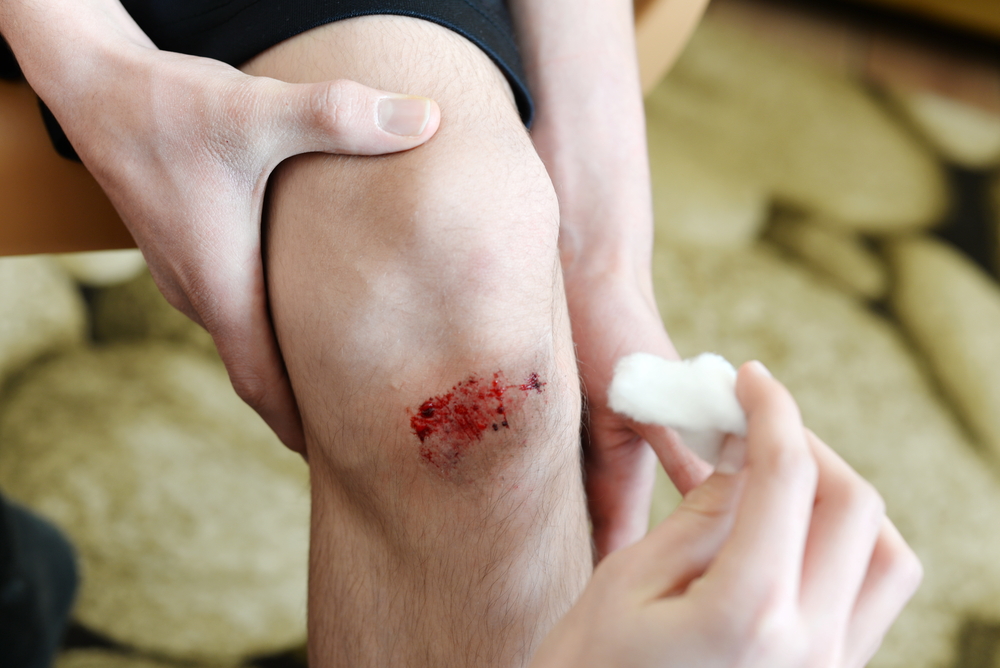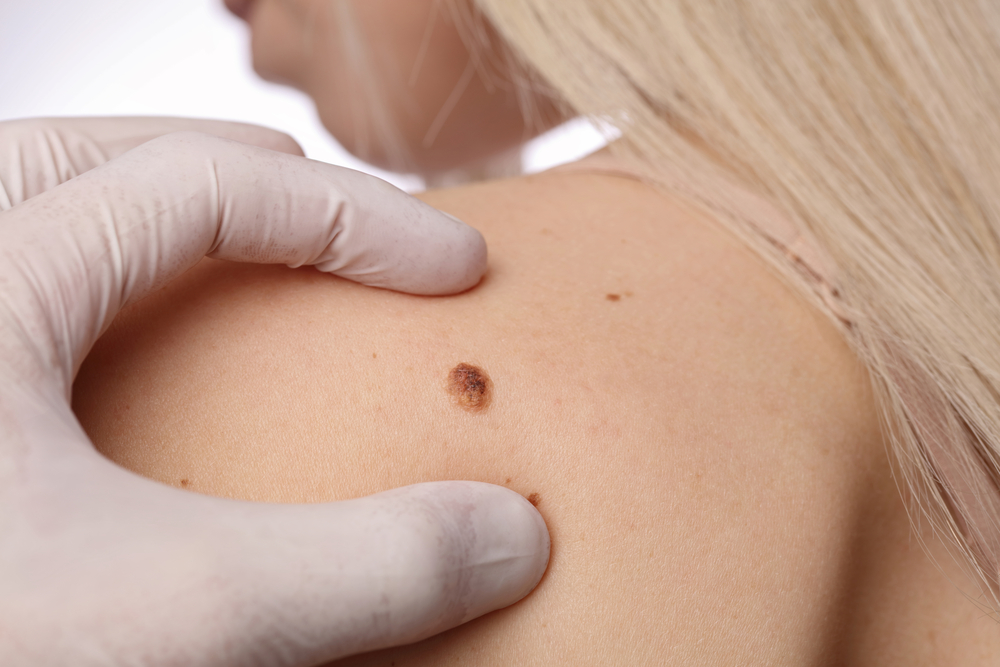- Wound healing is a complex process that can involve the regeneration of different cell types.
- In recent years there have been many advances in commercial wound care, including new antibiotics and nanoparticles.
- Many of nature’s best healing agents, however, have been available for thousands of years.
Western medicine has a large number of wound care management strategies at its disposal, but many plant-based products can also be implicated in wound healing.
Here we explore the uses, benefits and effectiveness of several popular natural wound care agents.
Wound healing: a complex process
Repairing damage to your skin is one of the most complicated biological processes.
Many layers of your body’s protective envelope may be affected, and because different cell types exist within different parts of the skin’s matrix, regenerating your skin to a healthy condition can be a challenge.
Injuries destroy the tissue and disrupt blood vessels. For a wound to heal, the bleeding needs to stop, inflammation needs to be prevented/controlled and finally, new tissue must grow and strengthen. All of this takes time.
In any scenario, early wound healing is always the goal.
A return to natural wound healing products
The 20th century saw the introduction of many kinds of wound care products, including such common ones as semi-permeable films (think Band-Aid). Others include calcium alginates, spray-on dressings, hydrogels, silicone dressings and foams.
More recently, there has been considerable investigation into the use of silver nanoparticles due to their antimicrobial properties. There are even a few new antibiotics available to combat bacteria resistant to treatment.
However, a couple of factors have led healthcare professionals to consider alternatives to modern products.
One is cost – commercial wound care products are expensive and translate to a high financial burden on the healthcare system. The second factor is the rise in bacterial resistance. This has prompted a return to the use of traditional and complementary wound healing products.
The use of natural wound care products may have originated on ancient battlefields, but there have also been new advances made to these traditional agents to boost their medical properties.
Which ones work best? We consulted with a few experts in the use of natural products and compiled a list of those that have proven useful.
- Spider silk
Dr. Sean McCaffrey is a Springfield, IL based wellness expert who specializes in integrative health. He has identified several natural products that are effective in wound healing.
“Spider silk has been used for centuries and is very effective in treating wounds, like cuts or scrapes,” he says. “It’s loaded with vitamin K and helps to reduce bleeding, promote clotting and accelerate healing. It also has antifungal and antibacterial properties, making it a powerful solution for wound treatment.”
According to Dr. McCaffrey, spider webs act in the same way as gauze pads, but with added healing properties.
- Chamomile
Dr. McCaffrey notes that chamomile has soothing properties that accelerate the healing process and promote tissue growth. It is also a powerful antimicrobial and anti-inflammatory agent that can reduce pain.
Simply apply a moistened chamomile tea bag to a wound to soothe irritation and promote healing.
- Aloe vera
Aloe vera has antibacterial properties that fight infection and is well-known for its healing properties, according to Dr. McCaffrey.
Aloe cools and soothes skin that has been harmed by minor burns, small cuts and abrasions, and has also proven effective in treating multi-drug resistant bacteria in leg ulcers.
This succulent is found worldwide and is an easy-to-grow houseplant. It’s quite handy to have this at home and be able to quickly cut open a leaf to gain access to its restorative sap.
- Honey
According to Health practitioner Caleb Backe of Farmingdale, NJ, manuka honey is high in antibacterial properties, making it an effective treatment for wounds. It can be spread on the wound two to three times a day before being covered with a bandage.
Dr. McCaffrey concurs, noting that honey is packed with antioxidants that can speed the healing process.
Honey in wound management is not new. Its use was documented by the Egyptians in 2000 BC who used it to treat wounds. Several studies from the early 1900s showed its effectiveness in treating burns but as antibiotic therapy became the norm, its use was abandoned.
However, with antibiotic resistance increasingly prevalent, honey is once again being investigated.
Honey provides our skin with a moist healing environment, and effectively absorbs the fluids (exudate) that seep from a wound. It also helps skin form new tissue while reducing swelling and inflammation. Some studies suggest that it may provide pain relief as well.
- Other products of note
Mr. Backe notes that coconut oil, which contains antibacterial properties is effective in preventing and treating infections.
Raw garlic also has antibiotic and antimicrobial properties, and according to Mr. Backe, it is also an excellent treatment for wounds. He notes, however, that it should not be left on the skin for more than 20 minutes.
The plant extracts comfrey, calendula and yarrow have also shown some efficacy in wound healing.
Comfrey – used topically as an ointment or cream – is good for treating bruises but should not be used on an open wound.
Calendula is rich with antioxidants and increases blood circulation at the wound site, which promotes healing. Diluted, it can be used as a soothing wash for wounds and as an oil, it can be lightly applied to wound sites.
Yarrow can help reduce bleeding, fight infection and can be applied directly to damaged skin as well.
Natural wound care products, rebooted with nanotech
Two entities of huge interest and potential in wound management are curcumin and cannabidiol. They are being revamped with cutting edge technology for use in wound care.
Both are being investigated by Dr. Adam Friedman, director of translational research at George Washington University.
- Curcumin
Curcumin, Dr. Friedman explains, is what gives turmeric its bright yellow color.
“The medicinal qualities of turmeric/curcumin have been established for thousands of years,” he says, “but now there is growing evidence of curcumin’s effectiveness in treating not only chronic pain but also psoriasis and skin infections, and in helping speed up wound closure.”
Dr. Friedman notes that while turmeric is commonly used in alternative medicine, curcumin hasn’t yet become a part of mainstream dermatology treatment – despite its impact on different pathways in the body that may be useful in treating cancer, autoimmune and inflammatory disorders.
“Additionally, it provides an ideal alternative to other drugs because of its safety profile, even at high doses,” he concludes.
Topical administration could be highly beneficial when directly delivered to the affected tissue, making it useful in treating skin-related disorders. However, he acknowledges some limitations. The yellow/orange color is not aesthetically pleasing, and it is poorly absorbed through the skin.
His research team is using nanotechnology, which he refers to as the science of the ridiculously small. Curcumin, he explains, is placed in tiny delivery vehicles (nanoparticles) that make topical use possible. Several studies show that these nanoparticles can treat infected wounds and deep fungal infections of the skin.
- Cannabis
Dr. Friedman’s team is also investigating cannabis. “Several properties of cannabis-derived ingredients (also known as cannabinoids) are well established and used in treating obesity, cancer, spasticity and tremors,” he notes.
More recently, he explains, their effects have been investigated in treating inflammatory bowel disease, arthritis, vascular inflammation and common dermatological conditions.
Cannabidiol (CBD), said Dr. Friedman, is probably the best known and studied cannabinoid without psychoactive effects – unlike THC. According to him, evidence from cell-based studies and animal models show that CBD can improve wound healing and minimize scar formation.
Delivery through the skin has been a limitation as cannabinoids in general have difficulty penetrating the outer skin barrier. New technologies to enable transdermal delivery are being developed at the Albert Einstein College of Medicine and GW School of Medicine and Health Sciences.
Innovation drives advances in wound care
The use of natural products in wound care has a long history and a strong presence – over 4 billion people in the world use plant-based medicines.
A growing number of medical practitioners are calling for more intensive study of these remedies so that we can better understand their effectiveness, safety and possible side effects.
At the same time, innovative treatments that combine the use of natural products with commercial medicine offer promising options to speed up wound healing.
» Interested in alternative wound healing treatments? Interested in alternative wound healing treatments? Meet our medical review team to learn more.









